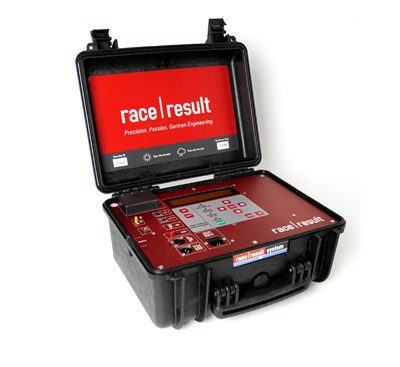Race against time: 4G antenna ensures every second counts
The margin between success and failure couldn’t be finer in the most prominent sports endurance events. There are often just fractions of a second between a competitor finishing in first or second place – which is why a highly accurate race timing and management solution is critical for successfully capturing endurance sports results. Andy Bird, Managing Director at GTT Wireless, explains how race organisers must look to adopt comprehensive race solutions that encompass timing, participant management and transponders to ensure race integrity.
Digital timing solutions first reached the market in the late 1990s and are now responsible for the smooth running of major events across the world, such as the multinational Rock’n’Roll marathon series and annual World Triathlon Series. With tens of thousands of participants competing in some of the world’s larger races, the ability to accurately track the performance of individual runners is imperative. Key to the success of these events is the use of a highly intuitive timing and management solution that boasts an average detection rate of over 99.9 percent. Timekeepers can both deploy and operate these solutions with minimal effort so participant data can be consistently gathered and transmitted to the correct locations.
Don’t take chances with connectivity
This data is captured and appropriately transmitted by collecting and processing live data from split points positioned throughout a course to instantly and reliably provide results to athletes, spectators and even TV crews.
But achieving and maintaining reliable connectivity at split points along a course can be a challenge for race organisers. Events take place in remote areas with limited cellular network coverage while the ever-increasing popularity of custom event apps for monitoring progress has added to the pressure for reliable connectivity to ensure a constant flow of live and accurate data.
Looking beyond 3G – solution innovation continues
Dedicated passive transponders, which do not require batteries, have been developed to track event participants. The associated decoder for these transponders may integrate a 3G module to collect participant timings, relay this data to the scoring software and provide functional connectivity in areas with strong cellular network coverage. But for events held in more remote locations, a more fit-for-purpose solution that harnesses 4G connectivity is necessary to ensure continuous operation.
4G modules are designed to fully integrate into a decoder to enhance connectivity range and stability in the most remote locations and should provide a port for race organisers to install an external 4G antenna. The latest generation of race timing and management solutions are addressing signal issues by providing an external 4G antenna, installed several metres above the main hardware to greatly improve signal strength.
Take for example a GTT Wireless client, a field leader in this sector. German-based race|result, a race management and race timing solution provider for international sports events worldwide, has recently upgraded its 3G module to 4G, to further boost timing connectivity range and stability in remote locations. Nikias Klohr, Head of R&D at race|result identified the problem: “An integrated 3G module offers acceptable connectivity in areas with strong cellular network coverage, but for events held in more remote locations we required a more fit-for-purpose solution.”
Durable hardware is critical
For events in remote or challenging locations, a rugged 4G antenna is central to the success of a race timing and management solution. This antenna should be IP67-rated and highly UV resistant so it can withstand environmental challenges ranging from extreme heat when deployed at marathons, to the cold and moisture experienced when timing skiing races.
Only with this dependable hardware can race organisers truly benefit from reliable 4G connectivity in a range of operating conditions. As a result, organisers are able to demonstrate their ability to provide consistent reliability, accuracy and a flawless race-day experience on a global stage for participants and spectators alike.
For race result, a rugged antenna which could withstand hostile environments was vital. As Klohr explains: “To introduce reliable 4G connectivity in a range of operating conditions, we required an equally reliable external antenna.”
The complete package
Race timing and management solution providers rely on their rigorous testing and quality control to ensure product reliability and using the best hardware to introduce reliable 4G connectivity in a range of operating conditions is equally important. This is why they need to identify and work closely with a wireless solutions provider that can be trusted to deliver the necessary components – made up of the best materials – to ensure race management solutions can reliably operate, despite the environmental challenges they may be exposed to.
Being a frontrunner requires the best hardware and connectivity
With leading endurance events taking place all over the world in a range of environments, timekeepers must have the support of a reliable, all-encompassing solution to withstand all types of extreme weather conditions and avoid the resulting connectivity issues that could occur. Having the necessary hardware and advanced connectivity to accurately, consistently and reliably capture and transmit data is vital to provide an optimal race experience for participants, spectators and those paying large sums to showcase endurance events.
In this competitive industry, regardless of the conditions, competitors and supporting hardware alike are exposed to, your antenna must be as reliable and protected as the core solution, so it performs exactly as it should. Remember, your solution is only as reliable as your antenna.










